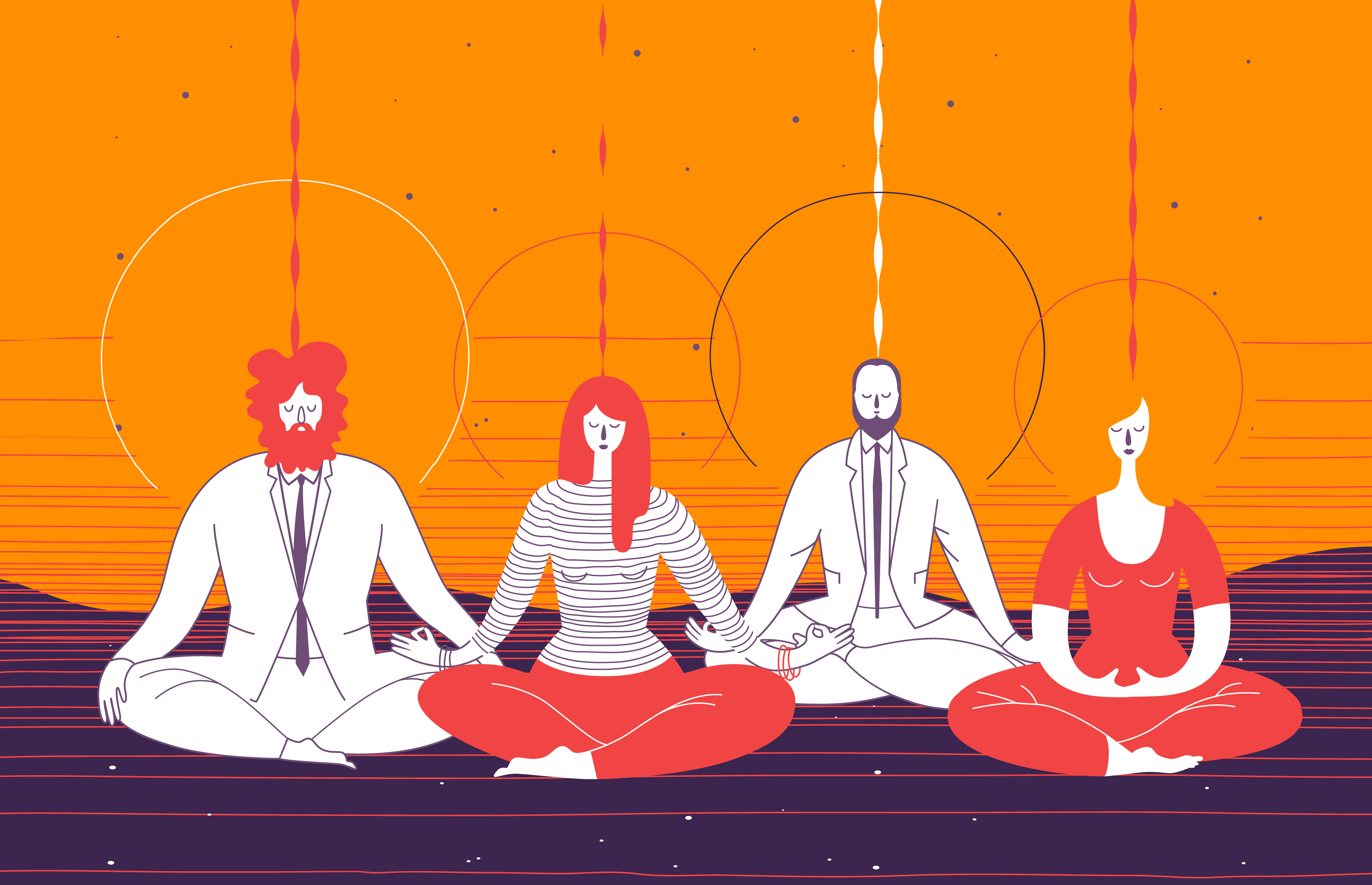By now, everyone knows that mindfulness meditation is good for you—but what’s still surprising scientists is just how quickly it works. Ten minutes of meditation won’t make you a better mutlitasker—there’s no such thing, as psychologist and science journalist Daniel Goleman explains—but it will make you more adept at switching tasks and returning to a deep level of concentration more quickly after a distraction. Every time you practice meditation, you’re strengthening the neural circuitry for focus and training your brain away from mind-wandering. Beyond the need to concentrate for work, pleasure, or to overcome negative emotion, mindfulness meditation can also help to manage disorders like PTSD, anxiety, and Attention Deficit Disorder (ADD). This last one particularly has shown incredible results, and Goleman cites one exercise a teacher in a rough neighborhood of New York City practices routinely with their class of seven-year-old kids, over half of which have special needs like ADD and autism. That daily ritual keeps the class environment calm and constructive, and is empowering the children with self-control strategies early on. The scientific research evidence on the benefits of meditation is already compelling, and there are major studies underway, which Goleman expects will reveal many more insights that can be used to instruct creative, educational, and mental health practices. Daniel Goleman and Richard J. Davidson are the authors of Altered Traits: Science Reveals How Meditation Changes Your Mind, Brain, and Body.
Daniel Goleman: What’s surprising, at least to scientists, is that the benefits from meditation show up right from the beginning. You can do, for example, mindfulness—that’s a very popular meditation—if you do mindfulness practice ten minutes a day or ten minutes three times over the course of a day something remarkable happens to your attention, and it has to do with the fact that we’re all multitasking these days. People on average look at their email about 50 times a day, they look at their Facebook 20-something times a day and that's just the tip of the iceberg. There's Instagram, there's your phone calls, there’s whatever it is you have to do. And what this means for attention is that we’re challenged. Focused attention is an endangered species, however, we need that focus to get work done well. So it’s a real problem and meditation, it turns out, even at the beginning, has some of the answers.
It goes like this: when you’re really intensely focused on that one thing you have to do or you want to do—the paper you’re writing or the project you’re working on—then you think, 'Oh, I better check my email,' and then that leads to your Facebook and that leads to the phone call, it leads to—we call this multitasking. The brain actually does not do multitasking, it doesn’t do several things at once in parallel, rather it works in serial and it switches very rapidly from one thing to the next. Then when you go back to that project or whatever it was you were so focused on, your concentration had been at a very high level before you started doing the other things, now it’s much lower and it takes a while to ramp up to that same level, unless—and this is so interesting—unless you’ve done that ten minutes of mindfulness; focused on your breath, for example, just watched it in and out, noticed when your mind wandered, brought it back. That’s the basic move in meditation. And if you do that it turns out just ten minutes of practice nullifies that loss of concentration. And this works, for example, for people who might do mindfulness in the morning, it will wane during the course of the day, but if you do ten more minutes at lunch, ten more minutes at break in the mid-afternoon, it helps you stay concentrated through the day. So that is a very palpable, concrete pay off from daily meditation that works for beginners.
There are many others too. For example, in terms of handling stress—I mean we’re all stressed out these days—and beginners in mindfulness or other meditations, it turns out right from the get-go, they have a better reaction to stress. We see this in brain function; the area of the brain which reacts to stress is called the amygdala—it’s the trigger point for the fight or flight or freeze response, it’s what makes us angry all of a sudden or anxious all of a sudden—the amygdala is quieter, it’s calmer in the face of stress and this lets us be calmer in the face of the stress. And this is another benefit that we see right from the beginning.
Because meditation has been found to work so well with anxiety and depression and possibly PTSD, where that’s being looked into, one of the areas that seems promising is meditation with Attention Deficit Disorder. In a way this is a no-brainer because at base, in essence, every kind of meditation retrains attention and what Attention Deficit Disorder is is a problem with attention. So there’s now a whole host of studies underway, mainly with kids because it’s where ADD tends to show up first, where they’re helping them strengthen the muscle of attention. I was in a classroom of seven year olds in Spanish Harlem, this is a very impoverished area of New York City, and those kids live in housing projects, they have very troubled lives and some of them had ADD—in fact half the kids in that classroom had what are called special needs, ranging from ADD to autism. I thought the classroom would be totally chaotic, but actually the kids were calm and focused and the teacher said: "Here’s why," and then they did their daily ritual of what they called Belly Buddies. Each child, one by one, went to their cubby, got a favorite little stuffed animal, found a place to lie down on a rug, put that animal on their belly and then they listened to a tape that guided them through watching their belly rise on the in-breath and fall on the out-breath. One, two, three on the in-breath, one, two, three on the out-breath. This is basically the beginning of mindfulness or meditation for kids. Cognitive science would say this is the training of attention.
So you can do it with very young kids and this helps them get stronger in their ability to concentrate. Attention Deficit Disorder is basically not being able to control your mind wandering off from what you’re paying attention to. Every time you watch your belly rise and then your mind wanders off and you bring it back to your belly, you’re strengthening the neural circuitry for focus and countering mind-wandering. So this seems very promising, and early studies, early pilots, show that this may well counter the problems kids face in ADD and I’m very happy to say that major studies are underway. We’re waiting for those results, but I think they’re promising.






